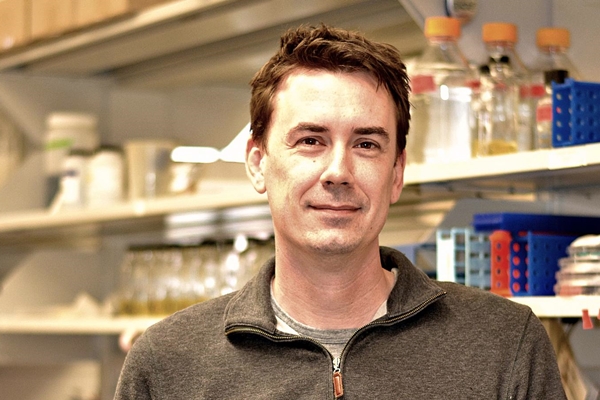13 October 2016. A biologist at Rice University in Houston is developing synthetic intestinal microbe circuits that respond to food to release therapeutic proteins. The team led by Rice synthetic biologist Matthew Bennett is receiving a 4-year $2 million grant for this project from National Institute of General Medical Sciences, part of National Institutes of Health.
Bennett, with colleagues from University of Kansas and University of Houston, are looking into ways to produce engineered bacteria that live in the gut, and generate disease-fighting proteins. The therapeutic proteins would be reliable, controllable, and respond to triggers in the diet. The microbes would also be programmed to work together, forming communities much like therapeutic computer circuits.
“Our idea,” says Bennett in a Rice university statement, “is that bacteria will produce and deliver drugs to your gut. We’re developing the biological control systems physicians need to safely and effectively turn the bacteria on and off.”
Bennett’s team plans to design and test a library of synthetic microbes that express molecules binding either to host DNA or ligands, molecules that attach to other proteins. These DNA- or ligand-binding molecules would then be mixed or matched to generate specific therapeutic outcomes. The synthetic microbes, living in the gut, would be triggered by small, or low-weight, molecules in food to release the protein combinations. Physicians could thus prescribe food supplements to activate the microbes.
In an earlier study, Bennett and colleagues showed how bacteria could be genetically engineered to produce proteins generating chemical signals that make it possible to synchronize their activities. The research demonstrated the feasibility of putting together communities of bacteria that coordinate their signals to resemble circuits. The Rice team members expect to extend that work to produce synthetic bacteria that integrate the work of other microbes.
The co-investigators provide the other key components of the system. “Liskin Swint-Kruse at Kansas,” notes Bennett, “is an expert in protein-structure function. Her lab is trying to understand how proteins can be engineered to respond to new small molecules. Kresimir Josic, a mathematician at the University of Houston, is developing computational models that help us design the control systems for the synthetic bacteria.”
The researchers plan to develop and test microbial circuits as components, such as pulse generators, that act as modules in larger systems. The team expects its work to expand the components of synthetic gene circuits that can be used as treatments for disease.
Read more:
- Grant Funding Study of Gut Microbe Protection Drug
- Clinical Trial Testing Live Bacteria as Acne Treatment
- Synthetic Biotech Research Microbe Developed
- Robo-Bacteria Engineered for Cancer Drug Delivery
- Bacterial-Biopolymer Delivery System Designed for Vaccines
* * *


 RSS - Posts
RSS - Posts
You must be logged in to post a comment.